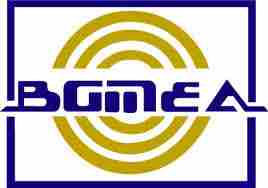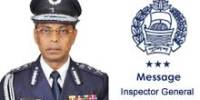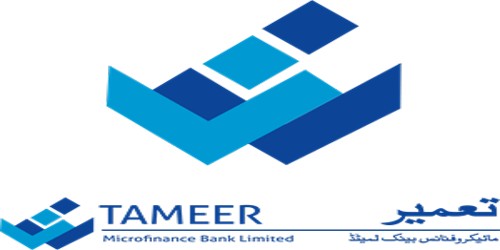BGMEA has released some requrements and practices for health and safety to ensure proper and safe working environment for its workers.
Building and Fire safety:
- All fire safety certificates/ licenses/ records of fire incidence in a factory should be maintained and updated on a regular basis.
- Factories should maintenance contract with fire equipment companies.
- For multi-story building, fire safety should be reviewed for the entire building.
- Building lay out & structural design must be approved by respective authority, including any extensions.
Fire safety: Best practice
- Agreements with other competent bodies for safety checks & certification of the factory building.
- An emergency fire safety plan should be developed & documented.
Fire extinguisher:
- Should be provided in sufficient number: minimum 1 per 1000 square feet.
- Mounted on wall, the top at maximum 1.5 meter (4 feet 10 inch) from the ground.
- Clearly marked, immediately accessible & never blocked.
- All fire equipment should be regularly maintained and inspected at least once in a month.
- Maximum distance between 2 fire extinguishers: 25 meter (82 feet).
- 25% workforce should be trained to handle fire extinguishers.
Fire extinguisher: Best practice
Regular check up.
Worker training for fire fighting.
Providing multipurpose fire extinguishers.
- Photographs of fire fighting team members are posted in the factory floor.
Fire alarm:
- Identifiable tone fire alarm which is different from the lunch bell and heard in all parts of the factory.
- Fire alarms are to be connected to a battery and marked clearly.
- Minimum of two control switches of fire alarm should be on each floor.
- Switch should be easily accessible and tested/ inspected monthly by a qualified person.
- Switches of the fire alarm should be next to an exit door/ staircase, electric control panel and dormitories.
Fire alarm: Best practice
Breakable fire alarms.
To maintain smoke detectors especially for all storage bonded areas, electric control panels and dormitories.
Fire Drill & Emergency Plans:
- At least once in a month fire drill.
- Maintain fire drill records in details including the a) Date & time of the drill b) Time taken for evacuation c) Number of persons present in the factory at time of evacuation.
- d) Any incident that happened while conducting the drill/ record of injuries.
- e) Comments/ remedial plans subject to incidents.
- An emergency plan should be set up.
- Fire drills should be conducted unannounced (but only after training sessions have been conducted)
- In multi-story buildings where a number of factories exist, combined fire drills should happen at least twice a year.
- Evacuation plan in local language displayed with workers training.
- Incase of common sharing:
- A “Tenant Fire Management and Prevention Committee” should be formed & Fire drills should be conducted jointly.
- Common fire fighting equipment, emergency lighting should be placed at stairwells, and stairs should be kept clear at all times.
- Fire drills should be held regularly at different times to ensure that all shifts participate on a regular basis in fire drills.
Emergency Exits:
- Open at all times during working hours.
- Clearly marked, accessible, unlocked and unblocked.
- Passages leading to the emergency exits inside and outside the factory should be clearly marked.
- The emergency exit signs should be illuminated and running on batteries.
- Emergency lights should be placed on staircase landing and work floors.
- Aisle should be marked clearly and a three feet distance should be maintained in between two machines.
- Guard rails should be provided on staircases at a minimum height of three feet.
- Factory gates should be unlocked during working hours.
- Factory security (both internal and external) should be oriented and trained.
- Stairs should be anti skid.
- Escape ways should be on opposite sides of the floor.
- Photo luminous marking should place on the emergency exits.
- Battery operated fog lights should be provided near emergency exits.
- Stair cases should not be spiral.
Fire Prevention:
- There should not be any defective wiring & loose electrical connections.
- Checking & record keeping of wiring maintenance once in every 15 days.
- Need special attention & monitor on iron, fusing machines, loose plugs, switches, circuit breakers on a daily basis.
- Lint to be cleaned once a week.
- Motor casing to be checked and cleaned once a week.
- Boiler operator must have certificate of competency.
- Appointing a qualified electrician who is responsible for these activities.
Workers Safety
- Adequate training of worker and providing safety devices as required.
- All moving parts of machinery should be covered.
- Rubber gloves and boots should be provided to workers in washing areas.
- Earplugs should be provided to workers working on high noise generating machines (85 decibels+).
- Metal mesh gloves of a proper size to be provided to the cutter.
- Each machine should be earthed and independently connected.
- Electrical connection should have proper plugs.
- No loose wire or extension cords substituting proper wiring.
- Electrical cable of cutting machine to be hung with a pulley system.
- Electrical panels to be provided with a metal mesh cage and rubber mat.
- Electrical wires not lying on floor, no cross passage.
- Hydro extractor to be covered.
First Aid
- Adequately stocked first aid boxes including a list of items should be maintained in each section (the number should not be less than one box per 150 workers).
- Boxes should be open, clearly marked, visible and portable.
- Boxes should be wall mounted at accessible height.
- A minimum of 2% of workers should be trained on first aid on each working floor/department.
- Workers trained in first aid should be identifiable.
- Medicine for common ailments should be kept separately.
- A doctor and nurse should be available in house in factories which have 500+ workers.
- Injury and first aid record register should be maintained and analyzed for preventative measures.
First Aid: Best Practice
- Photos and names of first aid trained workers should be clearly displayed on first aid boxes.
- Additional workers should be trained on first aid.
Chemical Safety
- Use only chemical suppliers who can provide Material Safety Data Sheet (MSDS) for each chemical available in factories.
- Material Safety Data Sheet (MSDS) should be available in Bangla.
- All containers in the factory must be properly labeled.
- Chemicals should only be stored in appropriate containers.
- Proper and regular training to workers handling chemicals.
- Adequate protective equipment and training for chemical handing.
- Spot removing chemicals should be closed tightly, labeled and kept separately.
- Spot removing should be done in a separate area that is well ventilated.
- Containers should be closed when not in use to limit airborne emissions.
- Separate, locked and well-ventilated chemical store with adequate fire protection.
- Maintenance of a chemical inventory is required.
Chemical Safety: Best practices
Spot removing should be done with a vent hood or with suction table that has ducts to remove gas from the building.
The person using the spot removing gun should use masks and gloves.
If the spot removing gun is not working it should be replaced with a new one.
Clearing areas should have fire extinguishers and fire alarm switches.
Workers Welfare
- Seating facility should be made available to standing workers.
- Safe drinking water should be available on all floors.
- Drinking water should not be situated within 20 feet of any washing place, urinals or latrine.
- Dining facilities should be provided for workers.
- Workers should feel comfortable with the temperature of the working area.
- Provisions should be made for separate and clearly marked toilets for men and women.
- Good lighting in working area as well as in toilets.
- Drinking water should be tested every 6 months.
Workers Welfare: Best practice
Back rest stools provided to the workers.
Workers to be provided with individual mugs.
Workers should be provided with sufficient breaks (preferably 10 minutes in every three hours of works).
Cleanliness
- Proper sanitary conditions in the toilets including adequate water.
- Hand washing facilities provided with soap.
- No lunch box kept in working area.
- The factory and lunch area should be kept clean.
- Cleaning schedules should be maintained and posted on bathroom door.
- Toilet should be tiled.
- Each worker should be provided with a locker for personal belongings.
Environment
- Suppliers are required to comply with all applicable National Environmental laws.
- ETPS are required for washing and dyeing units.
- Environment certificates should be collected and maintained.
- Boiler clearance/ permission/ certificate are required for all boilers.
- Boiler operator’s certificate is required.
- Permission for generator installation is required from proper authority.
- Empty chemical container should be stored and locked separately in a well ventilated room.
- Empty chemical containers & Tube lights should be safely and appropriately disposed of.
- Fused tube lights should be sent back to suppliers to be recycled.
















